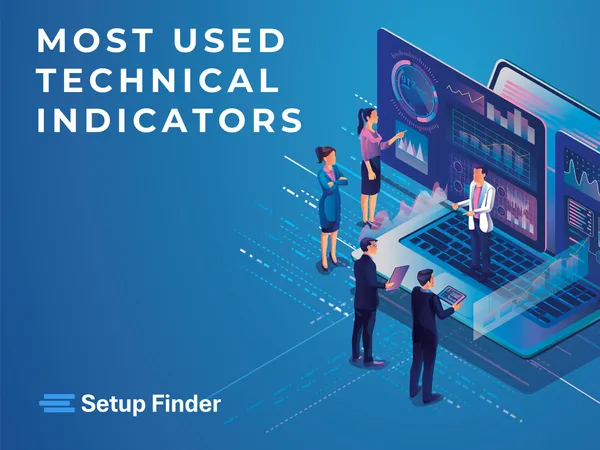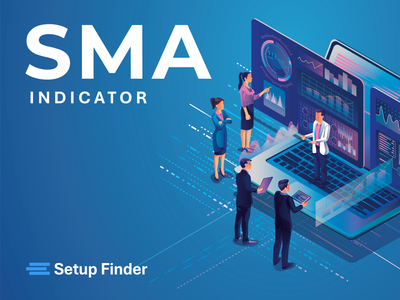Introduction to Trading Indicators
Trading indicators are essential tools that traders use to analyze market conditions, predict price movements, and make informed trading decisions. Whether you're trading cryptocurrencies, forex, or stocks, understanding the most used trading indicators can significantly enhance your ability to identify trends, reversals, and entry and exit points. In this guide, we’ll explore the 27 most commonly used trading indicators, explain their purposes, and provide examples of how they can be applied in real trading scenarios.
Remember you can always click on the name of the indicator to see our full articles about each indicators!
The 27 Most Used Trading Indicators
1. Relative Strength Index (RSI)
- Purpose: The RSI is a momentum oscillator that measures the speed and change of price movements. It helps identify overbought and oversold conditions.
- Application: Traders use RSI to spot potential reversals when the indicator moves above 70 (overbought) or below 30 (oversold).
2. Exponential Moving Average (EMA)
- Purpose: The EMA gives more weight to recent price data, making it more responsive to new information compared to a Simple Moving Average (SMA).
- Application: Traders use the EMA to identify trend direction and potential support and resistance levels.
3. Simple Moving Average (SMA)
- Purpose: The SMA calculates the average of a set of prices over a specific period, helping to smooth out price action and identify trends.
- Application: Commonly used to determine the overall direction of the market and to identify key support and resistance levels.
4. Weighted Moving Average (WMA)
- Purpose: The WMA assigns more weight to recent data points, making it more sensitive to price changes than the SMA.
- Application: Traders use the WMA to spot short-term trends and to identify support and resistance levels more quickly.
5. Moving Average Convergence Divergence (MACD)
- Purpose: The MACD is a trend-following momentum indicator that shows the relationship between two moving averages of an asset’s price.
- Application: Traders look for crossovers between the MACD line and the signal line to identify bullish or bearish signals.
6. Percentage Price Oscillator (PPO)
- Purpose: The PPO is similar to the MACD but expresses the difference between two moving averages as a percentage, making it easier to compare across different assets.
- Application: Traders use PPO to identify trends and potential buy or sell signals through crossovers and divergences.
7. Money Flow Index (MFI)
- Purpose: The MFI is a momentum indicator that uses price and volume data to identify overbought or oversold conditions.
- Application: Traders use MFI to spot potential reversals, especially when it diverges from price movements.
8. Commodity Channel Index (CCI)
- Purpose: The CCI is a momentum-based oscillator that measures the deviation of an asset’s price from its statistical mean, helping to identify overbought and oversold conditions.
- Application: Traders use CCI to identify potential reversals or the continuation of a trend, often when the indicator moves above +100 or below -100.
9. Average True Range (ATR)
- Purpose: ATR is a volatility indicator that measures the average range between the high and low prices over a specified period.
- Application: Traders use ATR to assess the level of volatility and to set stop-loss levels.
10. Average Directional Index (ADX)
- Purpose: The ADX measures the strength of a trend, regardless of its direction, and is often used in conjunction with the Directional Movement Index (DMI).
- Application: Traders use ADX to determine whether a trend is strong enough to justify following.
11. Standard Deviation
- Purpose: Standard Deviation is a statistical measure of volatility that shows how much an asset’s price deviates from its average price.
- Application: Traders use Standard Deviation to assess the risk associated with a trade and to identify potential breakouts.
12. Stochastic Oscillator
- Purpose: The Stochastic Oscillator is a momentum indicator that compares a particular closing price to a range of prices over a certain period.
- Application: Traders use it to identify overbought and oversold conditions, often in conjunction with other indicators like the RSI.
13. Fibonacci Retracement
- Purpose: Fibonacci retracement levels are horizontal lines that indicate potential support and resistance levels based on the Fibonacci sequence.
- Application: Traders use these levels to identify possible reversal points in the market.
14. Bollinger Bands
- Purpose: Bollinger Bands consist of a middle line (SMA) and two standard deviation lines, which help identify periods of high or low volatility.
- Application: Traders use Bollinger Bands to identify overbought or oversold conditions and to predict potential price breakouts.
15. Ichimoku Cloud (Ichimoku Kinko Hyo)
- Purpose: The Ichimoku Cloud is a comprehensive indicator that provides information about support and resistance levels, trend direction, and momentum.
- Application: Traders use the cloud to identify the strength and direction of a trend and to find potential reversal points.
16. Parabolic SAR (Stop and Reverse)
- Purpose: The Parabolic SAR is used to identify potential reversal points in the market by placing dots above or below the price chart.
- Application: Traders use it to set trailing stop-loss levels and to identify the direction of the trend.
17. Donchian Channels
- Purpose: Donchian Channels are a trend-following indicator that plots the highest high and the lowest low over a specified period.
- Application: Traders use Donchian Channels to identify breakout points and trend reversals.
18. Williams %R (Williams Percent Range)
- Purpose: Williams %R is a momentum oscillator that measures overbought and oversold levels by comparing the closing price to the high-low range over a specific period.
- Application: Traders use Williams %R to spot potential reversals and to confirm overbought/oversold conditions.
19. Chaikin Money Flow (CMF)
- Purpose: The CMF measures the accumulation and distribution of an asset over a specified period, combining price and volume data.
- Application: Traders use CMF to identify buying and selling pressure and to confirm trends.
20. On-Balance Volume (OBV)
- Purpose: OBV is a volume-based indicator that measures buying and selling pressure by adding volume on up days and subtracting it on down days.
- Application: Traders use OBV to confirm trends and predict potential reversals.
21. Rate of Change (ROC)
- Purpose: ROC is a momentum oscillator that measures the percentage change in price between the current price and a previous price from a set number of periods ago.
- Application: Traders use ROC to identify overbought and oversold conditions and to confirm the strength of a trend.
22. Pivot Points
- Purpose: Pivot Points are used to determine potential support and resistance levels based on the previous day’s high, low, and close prices.
- Application: Day traders use pivot points to identify potential reversal levels during the current trading session.
23. Vortex Indicator
- Purpose: The Vortex Indicator identifies the start of a new trend by using two oscillating lines that measure positive and negative trend movements.
- Application: Traders use the Vortex Indicator to spot potential trend reversals and confirm existing trends.
24. Chande Momentum Oscillator (CMO)
- Purpose: The CMO is a momentum oscillator that measures the rate of change in price movements, helping to identify overbought and oversold conditions.
- Application: Traders use CMO to predict potential reversals and to confirm momentum in the market.
25. Keltner Channels
- Purpose: Keltner Channels consist of a central moving average line and two bands based on the Average True Range (ATR), helping to identify breakout points and volatility.
- Application: Traders use Keltner Channels to identify potential breakouts and to assess the strength of a trend.
26. Accumulation/Distribution Line (A/D Line)
- Purpose: The A/D Line measures the cumulative flow of money into or out of an asset by considering both price movement and volume.
- Application: Traders use the A/D Line to confirm the strength of a trend and to identify divergences that may signal reversals.
27. Chaikin Oscillator
- Purpose: The Chaikin Oscillator measures the momentum of the Accumulation/Distribution Line, helping to identify potential trend changes.
- Application: Traders use the Chaikin Oscillator to confirm trends and to spot divergences that may signal reversals.
Conclusion: Choosing the Right Indicator for Your Strategy
Understanding these 27 most used trading indicators can significantly enhance your trading strategy, whether you're focusing on cryptocurrencies, forex, or stocks. Each indicator offers unique insights into market conditions, and combining multiple indicators can provide a more comprehensive view of potential trading opportunities. By mastering these tools, you can improve your ability to identify trends, reversals, and optimal entry and exit points in any market.







